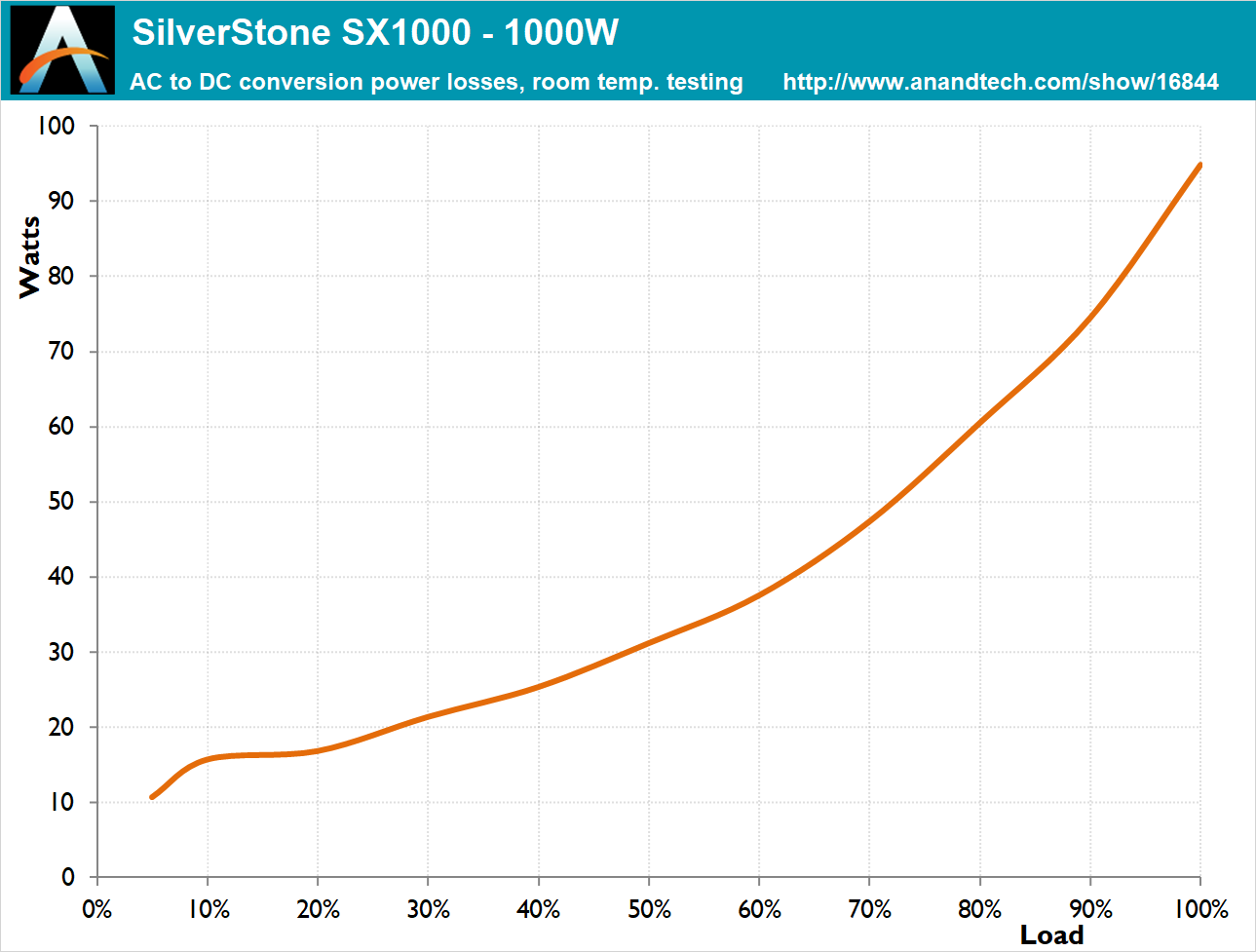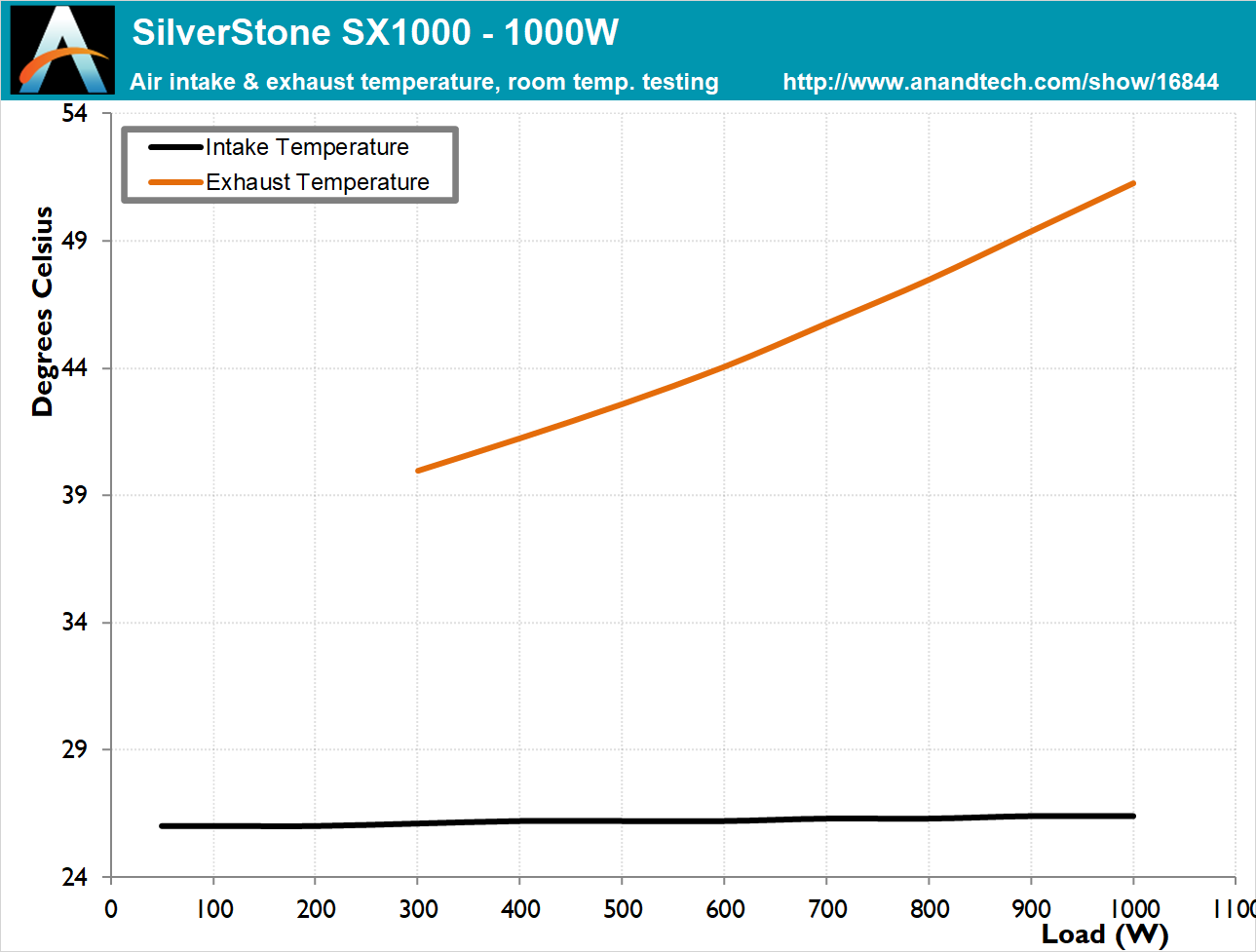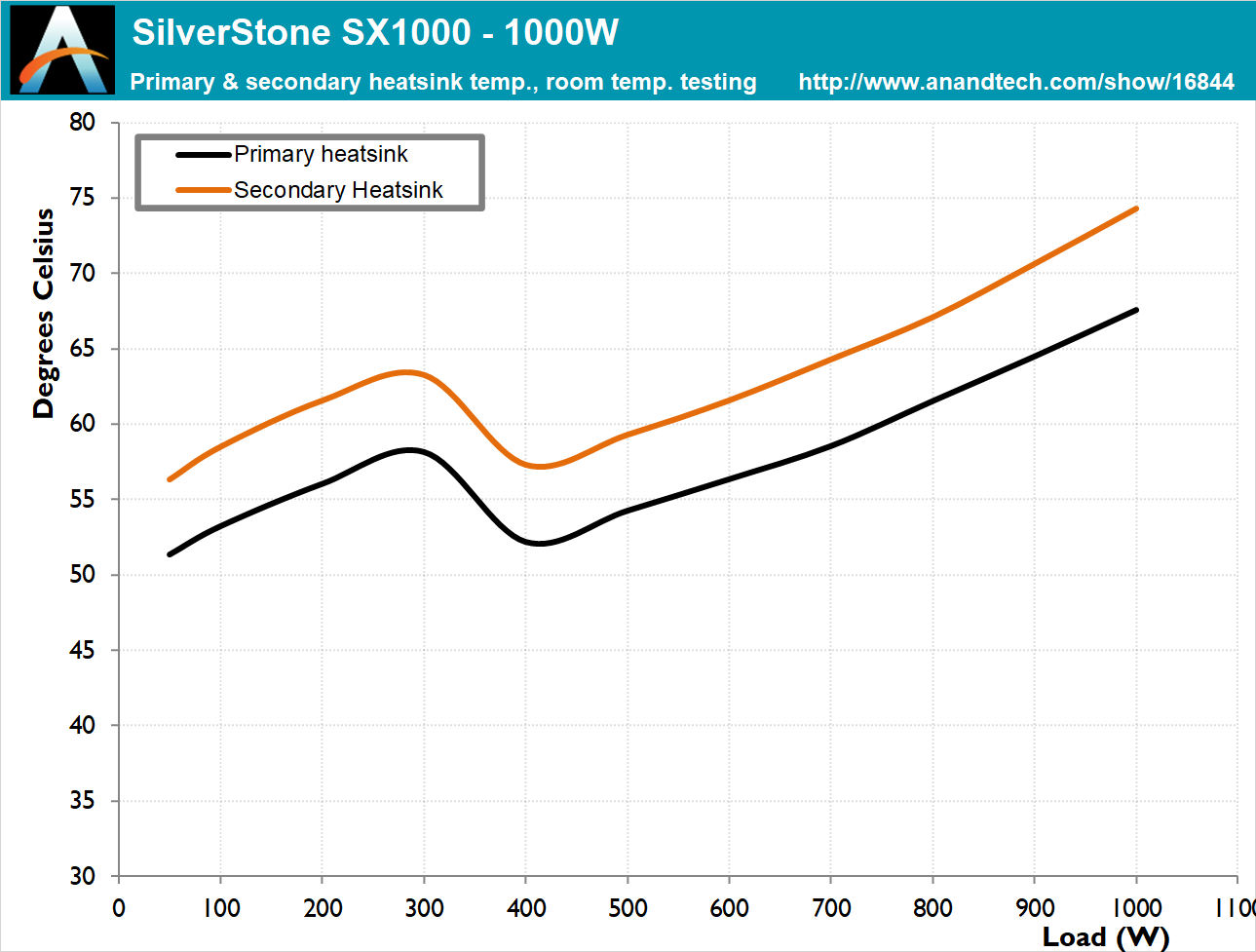The SilverStone SX1000 SFX-L 1 kW PSU Review: Big Power for Small Form Factors
by E. Fylladitakis on July 28, 2021 9:00 AM EST- Posted in
- Cases/Cooling/PSUs
- PSUs
- SilverStone
- SFX
- SFX-L
Cold Test Results (~25°C Ambient)
For the testing of PSUs, we are using high precision electronic loads with a maximum power draw of 2700 Watts, a Rigol DS5042M 40 MHz oscilloscope, an Extech 380803 power analyzer, two high precision UNI-T UT-325 digital thermometers, an Extech HD600 SPL meter, a self-designed hotbox and various other bits and parts. For a thorough explanation of our testing methodology and more details on our equipment, please refer to our How We Test PSUs - 2014 Pipeline post.
True to its specifications, the SilverStone SX1000 easily reached 80Plus Platinum efficiency levels while operating with a 115 VAC input. The increase in efficiency that switching to a 230 VAC input offers is measurable, but it would not be enough to grant the SΧ1000 an 80Plus Platinum certification, as the efficiency at 50% load did not surpass 94% as required by the protocol. Nevertheless, the efficiency figures are very good by any standard.
With that said, there is still significant room for improvement on the lower end of the curve, as the efficiency drops very sharply when the load is lower than 7-8% of the unit’s rated capacity. This is a small fraction of the PSU's total output, but still a significant amount of power on an absolute basis thnaks to the unit's high output.
SilverStone designed the SX1000 to be semi-fanless, i.e., the fan only spins when the load or temperatures are high enough to necessitate it. 80Plus Platinum units are efficient enough to operate in fanless mode until the load reaches several hundred Watts. The SX1000 was true to that rule, starting its fan when the load reached 300 Watts and remained this high for a few minutes. That is high enough to ensure that the fan will never spin when the system is idling or performing simple tasks.
Because the thermal circuit only starts the fan when the load is 300 Watts or greater, there's a fairly narrow window where the fan remains relatively quiet. If the load exceeds 500 Watts, the tiny heatsinks of the SX1000 cannot cope with the thermal losses and the demand for cooling falls upon the low-profile fan, which will keep increasing its speed in order to maintain the internal temperatures of the PSU within safe levels. The fan reached its maximum speed with a 90% load, while the SX1000 was operating unobstructed and in a room temperature environment.















37 Comments
View All Comments
CheapSushi - Thursday, July 29, 2021 - link
I wish tech sites and people would stop talking about SFX as if it shouldn't just be the standard PSU already. SFX and SFX-L should be every new modern PSU. 1000W shouldn't be surprising. It should be "why do you need 1000w SFX PSU". It should just be the norm of what to expect options wise. Why do we still want huge massive bricks? The entire industry is improving. It's like ignoring M.2 form factor because 3.5" HDDs exist. Why do you need a smaller had drive? See, sounds ridiculous. The same could be said about laptop chargers. They're finally getting smaller on average. Why can't we embrace SFX and SfXL as the norm. The more that is made, the cheaper it gets. The level evens out on price parity with legacy sizes. There are case adapters too. It just makes a huge amount of sense. Even in a big case, you still save volume. I'm using SFX in a Rosewill 4U for example. The adapter from Silverstone gives it more air vents in the same space. It's great. It's nothing unusual. Plus another thing with higher watts is it's the only way to get more SATA power ports.whaletail - Sunday, August 1, 2021 - link
Considering this is the first 1000W SFX-L PSU to market, doesn't seem like the market's ready for an SFX/SFX-L norm yet. As more consumers/enthusiasts demand smaller PSUs, which doesn't seem far-fetched, more momentum will develop in that direction, but we're not there yet.Oxford Guy - Wednesday, August 11, 2021 - link
‘doesn't seem like the market's ready for an SFX/SFX-L norm yet’Umm... what reality is ready for is wattage that conforms to the laws of physics in a practical manner.
Oxford Guy - Wednesday, August 11, 2021 - link
That said... better heatsinks may have helped. Better efficiency (‘titanium’). A better fan.Most importantly, though... not using power pigs like Rocket Lake and thus having no need to try to stuff 1000 watts into a small form factor.
easysteelchina - Friday, August 13, 2021 - link
EasySteel China is a Leading China Hastelloy blend supplier .We believe in credit and quality first. we offer in an assortment of approaches including pipe fittings,
bar, sheet, expansion joints. wire, plate, forgings, and a short time later a few.<a href="https://easysteelsh.com/project/plate/">Ch... rolled clad plate</a>
besterino - Tuesday, August 24, 2021 - link
This is the only SFX PSU actually able to power a (read: one) 3090 GPU.A couple of months ago I built a watercooled 5800X+3090FE system in a DAN A4 case (wiith external radiators, will not discuss "y tho?") and the Silverstone SX800-LTI PSU shut down consistently in various games, if I did not limit the power limit on the 3090 to ~80%. When I put this 1000W PSU in, all problems gone.
Fuckman4 - Monday, August 1, 2022 - link
I don't know why all Silverstone PSUs have a high ripple even in Titanium models!I have to wait for ROG LOKI for reasonable output quality.